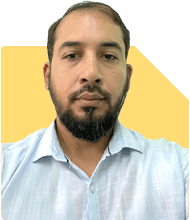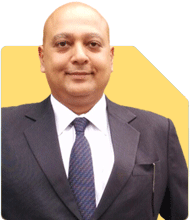Ramalingam Kalirajan |4142 Answers |Ask -Follow
Mutual Funds, Financial Planning Expert - Answered on Jun 30, 2024
He has an MBA in finance from the University of Madras and is a certified financial planner.
He is the director and chief financial planner at Holistic Investment, a Chennai-based firm that offers financial planning and wealth management advice.... more

Hi, i am 24 years old and currently my salary is 15k, and i wanted to retire at the age of 45 and at that time i wanted to have at least saving of 8cr. So could ypu please suggest that how much should i have to earn monthly and where to invest money and how much money should i have to invest so that i can get the desired result.
Assessing Your Current Financial Situation
At 24 years old with a monthly salary of Rs. 15,000, you are at the start of your financial journey. Your dedication to planning for retirement shows maturity and foresight. Let's break down how you can achieve your financial goals.
Setting Clear Financial Goals
You aim to retire at 45 with Rs. 8 crores in savings. This is a significant amount, and achieving it requires disciplined saving and smart investing.
Importance of Increasing Your Income
Currently, your salary is Rs. 15,000 per month. To reach your retirement goal, you'll need to increase your income over time. Consider pursuing additional qualifications or skills to enhance your career prospects. Look for opportunities to advance in your current job or explore higher-paying positions.
Savings and Investment Strategy
To accumulate Rs. 8 crores, you'll need to save and invest consistently. Here's a step-by-step guide:
Step 1: Build an Emergency Fund
Before investing, create an emergency fund. This fund should cover 6-12 months of your expenses. It provides a safety net for unexpected expenses or job loss. Keep this fund in a savings account or liquid mutual funds for easy access.
Step 2: Start with SIPs in Mutual Funds
Systematic Investment Plans (SIPs) in mutual funds are a great way to start investing. SIPs allow you to invest a fixed amount regularly, providing the benefits of rupee cost averaging and compounding. Start with a small amount and gradually increase it as your income grows.
Step 3: Diversify Your Investments
Diversification reduces risk and enhances returns. Spread your investments across different asset classes. Consider investing in a mix of large-cap, mid-cap, and small-cap mutual funds. Diversifying ensures you benefit from different sectors and market conditions.
Benefits of Actively Managed Funds
Actively managed funds can outperform index funds by leveraging the expertise of fund managers. These managers make investment decisions based on market analysis and trends, potentially yielding higher returns. While index funds passively track a market index, actively managed funds aim to beat the market.
Avoid Direct Funds
Direct funds require a good understanding of the market and regular monitoring. They can be time-consuming and risky for inexperienced investors. Instead, invest in regular funds through a Certified Financial Planner (CFP). A CFP can provide personalized advice and manage your investments, ensuring optimal returns.
Importance of Regular Investments
Consistent investing is key to reaching your goal. Set up automatic transfers to your SIPs and other investments. Treat your investments like any other monthly expense. This discipline will ensure you stay on track.
Review and Adjust Your Portfolio
Regularly review your investment portfolio. Market conditions and personal circumstances change over time. Adjust your investments based on these changes. A CFP can help you with this, providing expert advice and keeping your portfolio aligned with your goals.
Tax Efficiency
Consider the tax implications of your investments. Tax-efficient investing can significantly enhance your returns. Invest in instruments that offer tax benefits under Section 80C, like Equity-Linked Savings Schemes (ELSS). ELSS funds have a lock-in period of three years and offer potential for high returns.
Avoid High-Risk Investments
While high-risk investments can offer high returns, they also come with the risk of significant losses. Avoid speculative investments and focus on long-term, stable growth. A diversified portfolio of mutual funds provides a balanced approach to risk and return.
The Power of Compounding
Compounding is your best friend when it comes to building wealth. The earlier you start investing, the more time your money has to grow. Reinvest your returns to benefit from compounding. Over time, even small investments can grow significantly.
Balancing Current Needs and Future Goals
It's important to balance your current financial needs with your future goals. Create a budget to manage your expenses and savings effectively. Ensure you live within your means while setting aside money for investments.
Building Financial Discipline
Financial discipline is crucial. Avoid unnecessary expenses and debt. Live frugally and save diligently. Track your spending to identify areas where you can cut costs. This discipline will help you save more and invest consistently.
Seek Professional Advice
A Certified Financial Planner (CFP) can provide valuable guidance. They can help you create a personalized financial plan, recommend suitable investments, and monitor your portfolio. Their expertise ensures you make informed decisions and stay on track to reach your goal.
Investing in Your Education
Investing in your education and skills can significantly increase your earning potential. Higher income allows you to save and invest more. Consider part-time courses, certifications, or degrees that can enhance your career prospects.
Staying Informed
Stay informed about financial markets and investment opportunities. Read financial news, attend seminars, and join investment forums. Knowledge empowers you to make better investment decisions.
Emotional Resilience
The market will have ups and downs. Stay emotionally resilient and avoid making impulsive decisions based on short-term market fluctuations. Stick to your long-term investment plan and consult your CFP for guidance during volatile times.
Avoiding Common Pitfalls
Avoid common investment mistakes like chasing high returns, timing the market, or following the crowd. Stay focused on your goals and follow a disciplined investment strategy.
Final Insights
Reaching your goal of Rs. 8 crores by age 45 requires a strategic and disciplined approach. Increase your income, save diligently, and invest wisely. Diversify your investments, avoid high-risk and direct funds, and leverage the expertise of a Certified Financial Planner. Stay informed, resilient, and committed to your financial plan.
Best Regards,
K. Ramalingam, MBA, CFP
Chief Financial Planner,
www.holisticinvestment.in
You may like to see similar questions and answers below
Sunil Lala |193 Answers |Ask -Follow
Financial Planner - Answered on Oct 13, 2023
Sanjeev Govila |458 Answers |Ask -Follow
Financial Planner - Answered on Nov 15, 2023
Ramalingam Kalirajan |4142 Answers |Ask -Follow
Mutual Funds, Financial Planning Expert - Answered on Apr 23, 2024
Sanjeev Govila |458 Answers |Ask -Follow
Financial Planner - Answered on Jan 22, 2024
Ramalingam Kalirajan |4142 Answers |Ask -Follow
Mutual Funds, Financial Planning Expert - Answered on Jun 04, 2024
Ramalingam Kalirajan |4142 Answers |Ask -Follow
Mutual Funds, Financial Planning Expert - Answered on Jul 02, 2024
Ramalingam Kalirajan |4142 Answers |Ask -Follow
Mutual Funds, Financial Planning Expert - Answered on Jul 02, 2024
Aasif Ahmed Khan |27 Answers |Ask -Follow
Tech Career Expert - Answered on Jul 02, 2024
Aasif Ahmed Khan |27 Answers |Ask -Follow
Tech Career Expert - Answered on Jul 02, 2024
Aasif Ahmed Khan |27 Answers |Ask -Follow
Tech Career Expert - Answered on Jul 02, 2024
Sushil Sukhwani |432 Answers |Ask -Follow
Study Abroad Expert - Answered on Jul 02, 2024
Sushil Sukhwani |432 Answers |Ask -Follow
Study Abroad Expert - Answered on Jul 02, 2024
Aasif Ahmed Khan |27 Answers |Ask -Follow
Tech Career Expert - Answered on Jul 02, 2024
Aasif Ahmed Khan |27 Answers |Ask -Follow
Tech Career Expert - Answered on Jul 02, 2024
Aasif Ahmed Khan |27 Answers |Ask -Follow
Tech Career Expert - Answered on Jul 02, 2024














.jpg)





